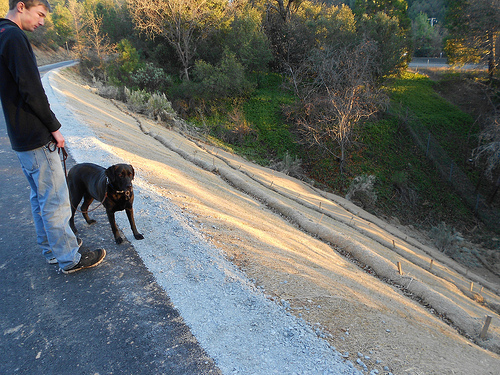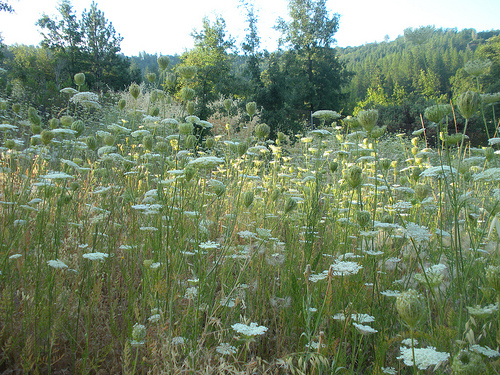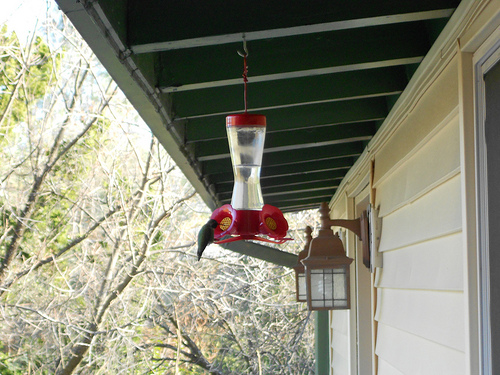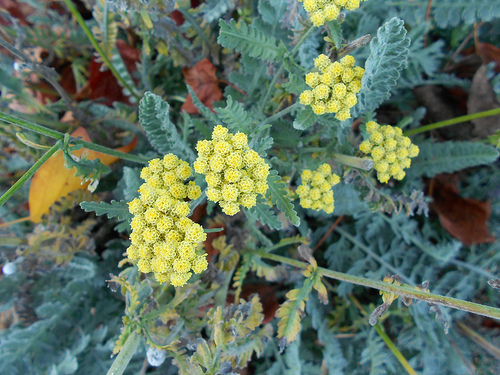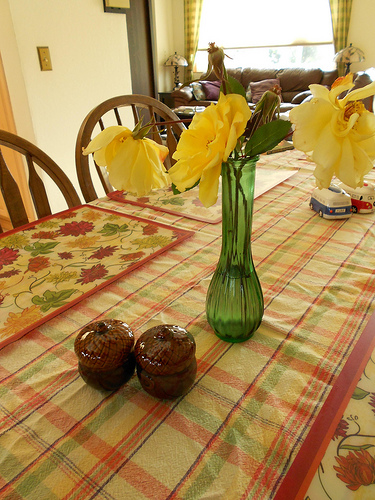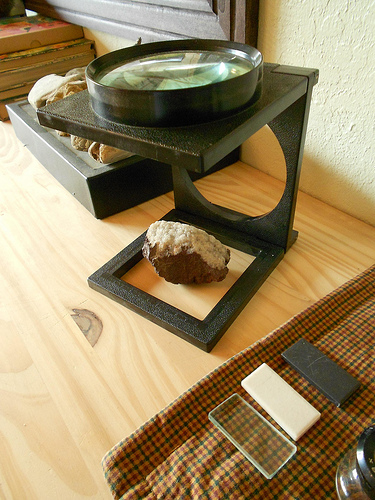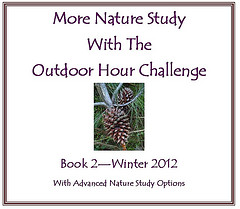Just another day of perfect December hiking and taking in the challenge to find some color. Our winter nature study is shaping up to look more like fall….warm temperatures and dry, dry, dry. We looked at each other after lunch today and everyone was in agreement. We needed to be outside.
I quickly filled the backpack with water, snacks, and camera then we were out the door. The parking lot at the trailhead was about half full of vehicles and most of those were trucks with horse trailers, a few with bike racks. We opted to hike since the Kona dog wanted to take a swim at the river. It was that warm.
The trail starts off on a downward slope and if you look in the distance you can see our landmark “lollipop” tree (farthest hill with a single tree). We aim for that tree and know that the river is somewhere over there. It is an easy hike with several trail options. We took the Long Valley Trail down to the river and the South Fork Trail back up.
Along one section of the trail we observed lots and lots of goldfinches having a seed feast. Amazing yellow color in real life…our first real color of the hike. We also stopped to observe another little bird who sat on the cattails in the ditch. It was a new bird and we took the time to really look with the binoculars, noting shape, size, color, eye-stripe, beak shape, tail shape, and song. (We identified back at home as a Bewick’s Wren=new to our life list!)
The river was running high and we had the place to ourselves, except for some barn swallows swooping overhead and a couple of fellow travelers on horses. This is a gorgeous section of the river all lined with oaks in the winter sunshine.
Kona took a swim right off the bat and I decided to rest on the rock overlooking the river. She splashed and retrieved sticks for the next half hour. One man in a canoe and one woman in a kayak went past. I was happy to be dry up on my rock but I waved a friendly wave as they floated past.
I soaked in the sun, watching the water rush by, and contemplated the beauty.
I was grateful. My heart felt refreshed or maybe just cleansed of the everyday.
The view from my rock spot was enjoyable and it is easy to get lost in your thoughts as the water rushes by you. So much power and so much potential…wondering where the water will end up at the end of its river journey. I even thought for a few minutes about the rocks just under the surface of the water, the rocks the kayaker succeeded in navigating around on her trip down the river. We all need to know where the rocks are.
Here is my favorite image of the day showing the winter color of my world. The shore of the river is always changing but these multi-colored rocks keep the river from eroding the banks away except in the highest storm waters. What are your favorite colors found in the rocks? The green? The pinkish orange? The speckled? The white? I put one in my pocket and now it is sitting on my shelf as a reminder of my winter color walk afternoon to the river.
We had to drag Kona away from her beloved stick fetching and started back up the hill towards home. Along the way we watched two birds in flight over the rolling hills…stopping to hover over some prey. We used the binoculars but were unable to really identify this second new bird of the day. We noted behavior, wing shape, size, color. At home we identified this new bird as the White Tailed Kite. How exciting is that?
It was a very good day.
My December nature journal entry in progress…notes and things I want to remember about this month….to be continued as the month rolls along.












